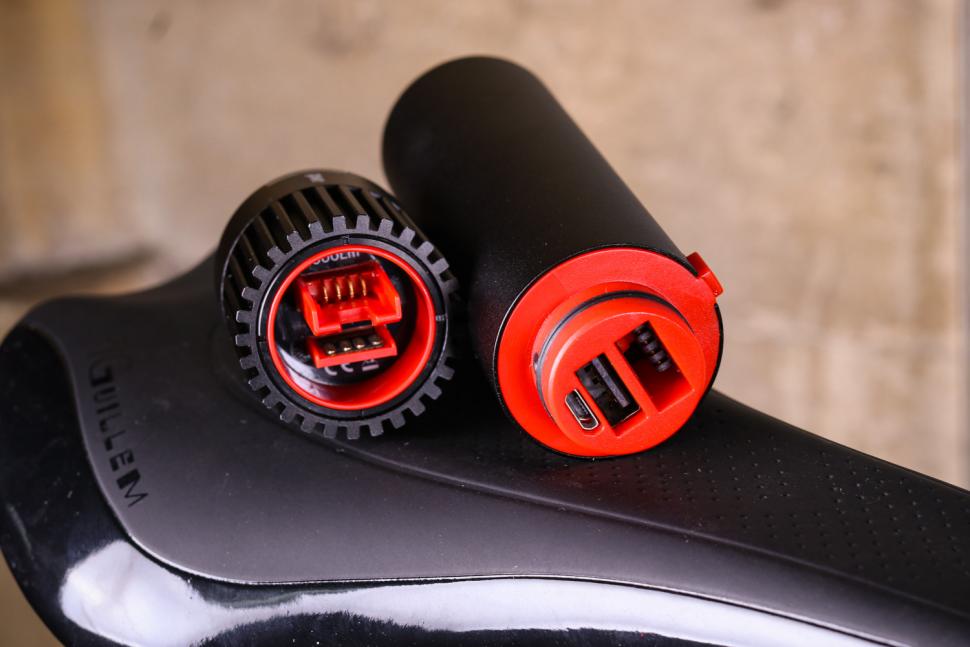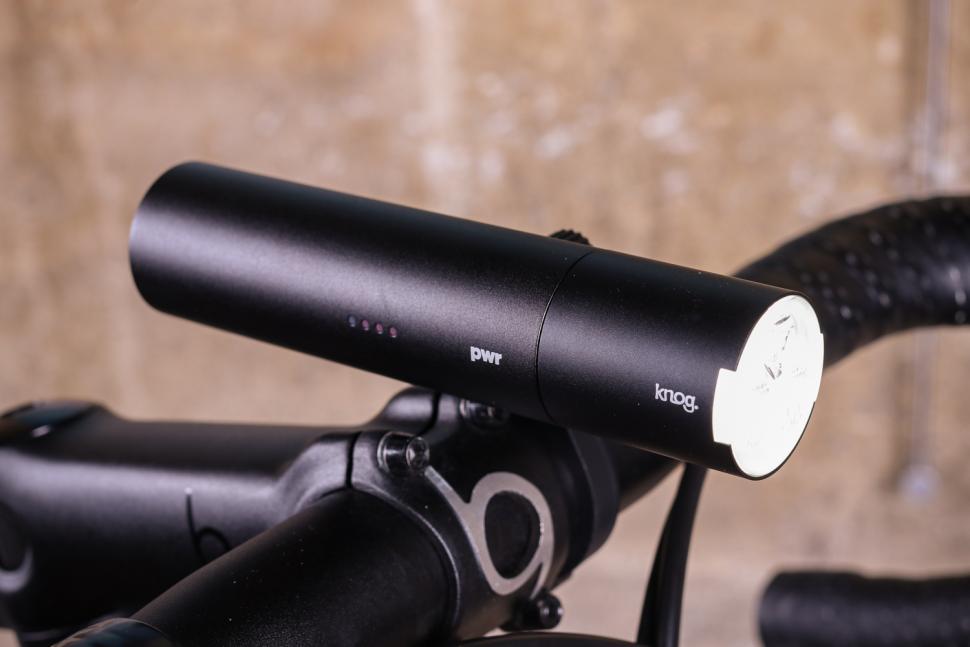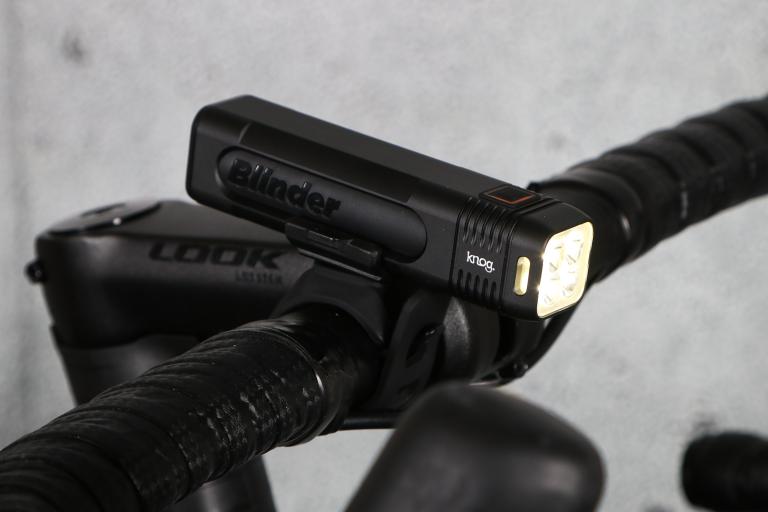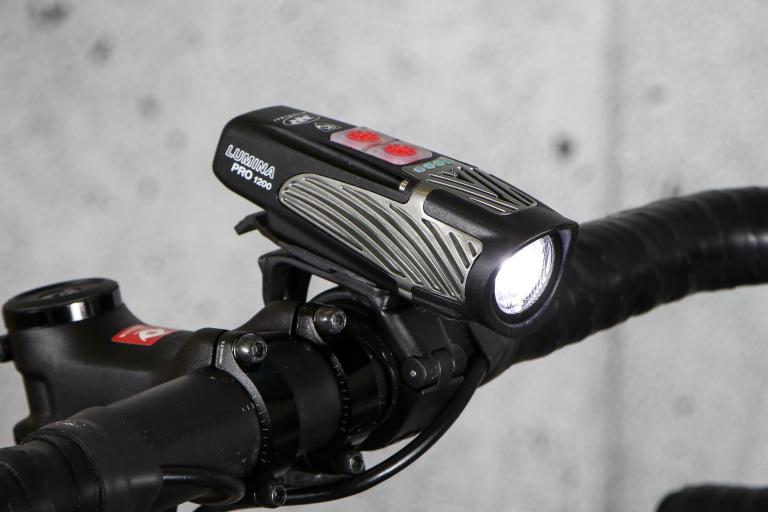- News
- Reviews
- Bikes
- Components
- Bar tape & grips
- Bottom brackets
- Brake & gear cables
- Brake & STI levers
- Brake pads & spares
- Brakes
- Cassettes & freewheels
- Chains
- Chainsets & chainrings
- Derailleurs - front
- Derailleurs - rear
- Forks
- Gear levers & shifters
- Groupsets
- Handlebars & extensions
- Headsets
- Hubs
- Inner tubes
- Pedals
- Quick releases & skewers
- Saddles
- Seatposts
- Stems
- Wheels
- Tyres
- Tubeless valves
- Accessories
- Accessories - misc
- Computer mounts
- Bags
- Bar ends
- Bike bags & cases
- Bottle cages
- Bottles
- Cameras
- Car racks
- Child seats
- Computers
- Glasses
- GPS units
- Helmets
- Lights - front
- Lights - rear
- Lights - sets
- Locks
- Mirrors
- Mudguards
- Racks
- Pumps & CO2 inflators
- Puncture kits
- Reflectives
- Smart watches
- Stands and racks
- Trailers
- Clothing
- Health, fitness and nutrition
- Tools and workshop
- Miscellaneous
- Buyers Guides
- Features
- Forum
- Recommends
- Podcast
review
£84.99
VERDICT:
Well built and interesting, with added value as a power bank, but there are cheaper and more powerful front lights
Weight:
153g
Contact:
At road.cc every product is thoroughly tested for as long as it takes to get a proper insight into how well it works. Our reviewers are experienced cyclists that we trust to be objective. While we strive to ensure that opinions expressed are backed up by facts, reviews are by their nature an informed opinion, not a definitive verdict. We don't intentionally try to break anything (except locks) but we do try to look for weak points in any design. The overall score is not just an average of the other scores: it reflects both a product's function and value – with value determined by how a product compares with items of similar spec, quality, and price.
What the road.cc scores meanGood scores are more common than bad, because fortunately good products are more common than bad.
- Exceptional
- Excellent
- Very Good
- Good
- Quite good
- Average
- Not so good
- Poor
- Bad
- Appalling
The Knog PWR Road 600 is a very nicely made modular front light that doubles up as a power bank for recharging phones and the like. It's full of innovations, such as interchangeable 'Lightheads', but outright lighting performance is a little underwhelming.
- Pros: Very nicely made, interesting customisation options, can be used as a power bank
- Cons: Expensive, outright lighting power is no more than OK, interchangeable Lightheads look weird in different battery bodies
What's this? A Knog light costing almost £85? For people who became fans of the Aussie brand through its fun, funky and value for money ethos, there may be some despair that Knog has a front light with an RRP that dangerously approaches three figures. But don't panic entirely. Although you may not be able to buy the PWR Road front light with your pocket money, it certainly hasn't lost any of Knog's fondness for innovation.
> Find your nearest dealer here
The first thing to note is, this is not simply a front light. It's actually a 3350mAh power bank, perfect for charging phones and other electronic devices, but which also happens to accept a 600-lumen 'Lighthead' attachment that comes included here. This simply pushes on, with internal rubber seals keeping everything nice and waterproof. (When not in use as a light, Knog provides a blank plug to cover the charging ports.)
Light modes
Aside from the basic premise of the PWR Road, there are innovations found in the details. For example, the light has no buttons. You twist the Lighthead – the bit you push on – hold for a couple of seconds, and it switches on. Then twist it again to run through the six available modes: Max (600 lumens/2.3 hours); Mid (250 lumens/6.1 hours), Stamina (65 lumens/23 hours); Pulse (600 lumens/8 hours); Strobe Flash (250 lumens/12 hours) or finally Eco-Flash (65 lumens/195 hours).
Knog says charging takes about five hours – although in my experience this was actually closer to four hours – and you can see how much power your PWR Road has via four LEDs situated halfway along the CNC'ed aluminium body.
If the standard selection of six modes isn't enough, you can program supplementary modes and run-time preferences through Knog's ModeMaker app, downloadable from the Knog website. Meanwhile Knog says its Lightheads are interchangeable, so you could potentially fit one of the 1,000 or 2,000-lumen Lighthead options – although these have wider diameter bodies and would look a trifle odd fitted to the PWR Road's small aluminium body.
Build quality
Talking about the aluminium body, this is about as far away from the brightly coloured, silicone-infused Knog products of old as you could imagine. The PWR Road is really a beautifully made product, right down to the display-box-quality packaging. In the hand, the light feels sturdy but – at 153g – it's certainly not unnecessarily heavy.
The handlebar quick-release mounting bracket is another functional wonder and securely clamps around 31.8mm bars or 22.2mm bars with the included shim. It's actually a side bracket, so the light body slots onto it sideways, rather than on top, then a little thumbwheel extends a tongue that slots into one of two grooves on the light body to hold it in place. It's all very neat, works well and being quick release means removal is very simple, too.
Performance
But out on the road is where performance really counts and here the PWR Road is decent if not quite as spectacular as the rest of the package. At full power, the 600 lumens beam lights up the first 60 feet/20 metres of road well, but it starts to struggle as you reach further beyond 100 feet/30 metres. However, the smoothly graduated and ovalised beam shape does provide decent performance, lighting up the roadsides.
It's good enough for riding at a cruise but doesn't seem quite as bright as other 600-lumen lights I've tested, and you might well find forward visibility wanting if you're going hell for leather. In fact, to put my mind at rest, I compared it side-by-side with the CateEye Sync Core, which seems to outshine it, even though that only has a stated output of 500 lumens.
At less extreme speeds, such as urban riding and commuting, the PWR Road's 'Mid'/250-lumen option is very good. Incidentally, perfect for these kinds of riding duties, the lens has small illuminated side sections to keep you visible at 90 degrees.
Water resistance is also good – I gave it the full shower test, with no problems – and the handlebar bracket holds everything firmly.
Value and conclusion
Because of that slight letdown in performance terms, the £84.99 asking price seems a little steep. Yes, it's well made and the power bank potential is a handy extra, but this is a light first and foremost. The Sigma Buster 700 at £61.99 and the Kryptonite Alley F-800 at £74.99 – to name just two lights we've tested recently – offer noticeably better illumination for less money.
> Read more road.cc reviews of front lights for cycling
Perhaps the biggest problem with the PWR Road is its name. I think it's on the cusp of being underpowered for drop-bar riding at any great speed, and seems better suited as a general use front light. Recognise these lighting limits, though, and you've got a classy front light that's also ready to help you out when your phone runs out of charge.
Verdict
Well built and interesting, with added value as a power bank, but there are cheaper and more powerful front lights
road.cc test report
Make and model: Knog PWR Road Front Light
Size tested: 600 Lumens
Tell us what the light is for, and who it's aimed at. What do the manufacturers say about it? How does that compare to your own feelings about it?
Front bike light/power bank, aimed at road riders.
Knog says: "PWR Road is a modular bike light. But it's not JUST another bicycle light. Not only is it a high power headlight, but simply take the product apart and you have much more. A Lighthead for other PWR bike and camping lights, plus a PWR Bank to charge devices that is also the battery for all products in the PWR range. The PWR Road outputs a max 600 lumens, can run for up to 195 hours on Eco Flash mode, uses an elliptical beam for broader road coverage, can be mounted both on top or under the handlebar (mount under your Garmin), or your helmet, incorporates twist mode operation (turn the light on and off twisting the Lighthead - no buttons) and gives you the option to program your brightness and runtime through our ModeMaker app."
Tell us some more about the technical aspects of the light?
From Knog:
RUNTIME
MODE LUMENS RUNTIME
Max 600 2.3hrs
Mid 250 6.1hrs
Stamina 65 23hrs
Pulse 600 8hrs
Strobe Flash 250 12hrs
Eco-Flash 65 195hrs
FEATURES
PWR is an ecosystem of bike and outdoor products designed to share their battery. But, that battery also works as a power bank to charge your devices. PWR Road runs for 2.3 hours at 600 lumens, or up to 195 hours in Eco-flash mode.
Elliptical beam - Elliptical beam for wide view works with spot beam for intense light in front of front wheel.
Programs your modes - The ModeMaker app lows you to design the modes for any PWR bike light. Simply plug in your light, then select and tailor modes from the menu. You can do things such as control brightness, adjust runtimes and add new light modes.
Functionality - Twisthead operation to turn light on / off and to scroll through light modes (no buttons).
Charge your devices - Rear of the light is a USB rechargeable power bank. Use this to charge your phone, GoPro or cycle computer on the go. 1 hour riding @250 lumens means you can top up charge your iPhone by10%. Charge time 3.5 hours.
SPECIFICATION
Light output: 600 Lumens.
Power Bank: 3350 mAh.
Dimensions: 104 x 30mm
Weight: 125g.
Battery indicator.
Charges your devices.
CNC Machined.
Programmable modes.
Interchangeable lightheads.
Twist operation.
USB rechargable.
Water resistant when cap is on.
INSTRUCTIONS
Connect lighthead to PWR bank: Insert the two lighthead plug pins into the battery. When connected, your lightheads LED's will flash.
Connect lighthead to sidemount: Slide the mount into the slot on the side of the battery. Then tighten the thumbwheel. To remove the mount you will need to loosen the thumbwheel.
Operation: Once the lighthead and battery are connected, twist the lighthead and hold to turn on, twist and release to change modes.
Rate the light for quality of construction:
8/10
Looks and feels like a quality bit of kit.
Rate the light for design and ease of use. How simple was the light to use?
9/10
Couldn't be much simpler: push on the Lighthead and twist to operate – no buttons at all. Charging and use as a power bank is easy, too.
Rate the light for the design and usability of the clamping system/s
9/10
Very impressed with the clamping system – smart and practical.
Rate the light for waterproofing. How did it stand up to the elements?
9/10
Seemed to hold up to a deluge, so should withstand typical rain without issue.
Rate the light for battery life. How long did it last? How long did it take to recharge?
8/10
Battery life is fairly standard for this kind of product – slightly more than two hours of light on full power, six hours on the probably more favoured Mid/250 lumens mode. At just more than four hours, it actually took less time than the instructions said to recharge.
Rate the light for performance:
6/10
I was a little underwhelmed with performance. Beam shape is very nice, but outright power seems lacking.
Rate the light for durability:
8/10
Looks built to last – no problems so far.
Rate the light for weight:
8/10
Very good – lighter than its sturdy build might suggest.
Rate the light for value:
4/10
Although classy build and with added appeal as a power bank, the PWR Road is not cheap for a 600-lumen light. The Sigma Buster 700 at £61.99 and the Kryptonite Alley F-800 at £74.99 offer noticeably better illumination for less money.
Tell us how the light performed overall when used for its designed purpose
I liked setting it up and getting familiar with its operating system, but out on the road it wasn't quite as bright as I would have liked.
Tell us what you particularly liked about the light
Build construction and design innovations.
Tell us what you particularly disliked about the light
Lack of outright power.
Did you enjoy using the light? Yes
Would you consider buying the light? No
Would you recommend the light to a friend? Yes, if they were a commuting cyclists.
Use this box to explain your overall score
Although there's a lot to love about the PWR Road, and its design quirks are fun and functional, where performance really counts – on the road – I found it slightly lacking.
About the tester
Age: 39
I usually ride: Islabikes Beinn 29 My best bike is: 25-year-old Dawes Galaxy
I've been riding for: Over 20 years I ride: Most days I would class myself as: Experienced
I regularly do the following types of riding: commuting, touring, sportives, general fitness riding, mountain biking, leisure













I wonder if you could use a Northwave shoe (w/Speedplay drilling) on the Ekoi pedal. Possibly using one Look pattern cleat hole and two Speedplay...
My son was driving normally and then stopped and then a cyclist hit him because he 'obviously didn't see him' which sent the cyclist into a rage is...
I've worked in local government before and some really don't need any training for that - they're already masters!
They have here: results at 14.40. The aero bike was roughly fifteen seconds faster than a climbing bike on a descent of around 6 km, so about 3km/h...
As I've also placed here the nutter Audi and white van drivers, I've decided to give those no-nonsense keep-the-country-moving BMW drivers a list...
100% this. Policing mentality is formed by social 'norms', and the cyclist witchhunting across social media is the UK norm. Close passing a person...
That's a clear 2 points awarded there, but I guess as there's now a 25% tariff you'll only get 1.5
Fawkes Cycles is only local if you live near Oldham. That's nearly 300 miles away from me. Also, any retailer that doesn't participate in an...
Openreach under fire over delays to Amesbury cabinet repairs...
Anodizing the aluminium is also for corrosion resistance and therefore enhances the longevity of the rims while this is not really a case for...